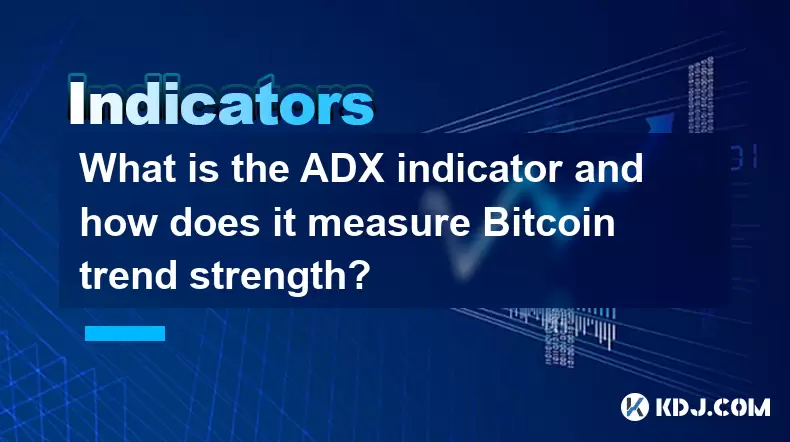-
 Bitcoin
Bitcoin $109,330.5032
0.89% -
 Ethereum
Ethereum $2,661.8271
3.39% -
 Tether USDt
Tether USDt $1.0006
0.04% -
 XRP
XRP $2.3808
4.11% -
 BNB
BNB $663.3047
0.75% -
 Solana
Solana $154.6074
2.96% -
 USDC
USDC $1.0001
0.02% -
 TRON
TRON $0.2876
0.47% -
 Dogecoin
Dogecoin $0.1736
2.37% -
 Cardano
Cardano $0.6105
5.06% -
 Hyperliquid
Hyperliquid $39.2542
4.13% -
 Sui
Sui $2.9702
3.11% -
 Bitcoin Cash
Bitcoin Cash $507.3879
0.84% -
 Chainlink
Chainlink $14.0303
3.57% -
 Stellar
Stellar $0.2912
14.83% -
 UNUS SED LEO
UNUS SED LEO $9.0547
-0.25% -
 Avalanche
Avalanche $18.6501
3.24% -
 Hedera
Hedera $0.1702
6.77% -
 Shiba Inu
Shiba Inu $0.0...01213
2.66% -
 Toncoin
Toncoin $2.8233
2.12% -
 Litecoin
Litecoin $88.6781
2.43% -
 Monero
Monero $321.5220
2.77% -
 Polkadot
Polkadot $3.5388
4.44% -
 Dai
Dai $1.0002
0.02% -
 Ethena USDe
Ethena USDe $1.0010
0.07% -
 Uniswap
Uniswap $8.2247
8.18% -
 Bitget Token
Bitget Token $4.3451
1.00% -
 Aave
Aave $298.6045
4.39% -
 Pepe
Pepe $0.0...01035
3.13% -
 Pi
Pi $0.4643
1.47%
What is the ADX indicator and how does it measure Bitcoin trend strength?
2025/07/09 23:28

Understanding the ADX Indicator
The ADX (Average Directional Index) is a technical analysis tool used to measure the strength of a trend in financial markets, including cryptocurrency. Developed by Welles Wilder, the ADX does not indicate whether the trend is bullish or bearish but rather how strong the current trend is. In the context of Bitcoin, this indicator becomes particularly useful during volatile market conditions.
ADX values range from 0 to 100, with higher values indicating stronger trends. Typically:
- ADX below 25: Suggests a weak or non-trending market.
- ADX above 25: Indicates a trending market.
- ADX above 50: Suggests a very strong trend.
Traders often use this metric alongside other indicators like the +DI (Positive Directional Indicator) and -DI (Negative Directional Indicator) to determine both the direction and strength of a trend.
How ADX Works Mathematically
To understand how ADX measures Bitcoin’s trend strength, it's essential to grasp its calculation methodology. The formula involves several steps:
- Calculate directional movement (+DM and -DM) based on price highs and lows.
- Compute true range (TR), which accounts for gaps between previous closing prices and current highs/lows.
- Determine smoothed averages of +DM, -DM, and TR over a specified period (usually 14).
- Derive +DI and -DI by dividing smoothed DM values by the smoothed TR and multiplying by 100.
- Calculate the directional movement index (DX) using +DI and -DI:
$$ DX = \left( \frac{|\text{+DI} - \text{-DI}|}{\text{+DI} + \text{-DI}} \right) \times 100 $$ - Finally, compute ADX as a smoothed moving average of DX values over the same period.
This mathematical foundation ensures that ADX reflects the persistence of a trend, especially important when analyzing assets like Bitcoin, which can experience rapid shifts in momentum.
Using ADX for Bitcoin Trend Analysis
In the world of Bitcoin trading, identifying strong trends early can significantly improve trade outcomes. When the ADX rises above 25, it signals that a trend has developed, whether upward or downward. Traders then look at the relationship between +DI and -DI to determine the direction of the trend.
- If **+DI crosses above -DI**, it may signal a potential uptrend.
- If **-DI crosses above +DI**, it could indicate a downtrend.
For example, during a strong bull run in Bitcoin, you might observe the ADX line climbing steadily, accompanied by +DI remaining above -DI. Conversely, during a bearish phase, -DI dominates, and ADX remains elevated, suggesting a powerful downtrend.
Interpreting ADX Signals in Volatile Markets
Cryptocurrency markets are inherently volatile, and Bitcoin is no exception. This volatility can sometimes cause false signals or whipsaws when relying solely on ADX. Therefore, traders should not rely exclusively on this indicator but instead combine it with others such as moving averages, RSI, or volume analysis.
- During consolidation phases, **ADX stays below 25**, signaling a lack of clear trend.
- Sudden spikes in **Bitcoin price** may push **ADX above 25 temporarily**, but if it quickly retreats, the trend may not be sustainable.
- When **ADX peaks and starts to decline**, it can suggest that the current trend is losing momentum, even if prices continue to move in one direction.
These nuances help traders avoid premature entries or exits, especially in fast-moving environments where Bitcoin can swing dramatically within short timeframes.
Practical Steps to Apply ADX in Bitcoin Trading
Integrating the ADX indicator into your Bitcoin trading strategy involves several practical steps:
- Select a reliable trading platform or charting tool that supports **ADX visualization**, such as TradingView or Binance’s native tools.
- Set the default period to 14 unless you have a specific reason to adjust it.
- Enable both **+DI and -DI lines** along with ADX for complete insight.
- Observe how ADX behaves during different market conditions—look for patterns where **trends coincide with ADX rising above 25**.
- Use **crossover signals between +DI and -DI** to confirm trend direction before making trades.
- Combine ADX readings with candlestick patterns or support/resistance levels for better confirmation.
By following these steps, traders can more accurately assess the strength and sustainability of Bitcoin’s current trend, helping them make informed decisions.
Frequently Asked Questions
Q: Can ADX predict future price movements of Bitcoin?
A: No, ADX does not predict price direction; it only measures the strength of an existing trend. Price prediction requires additional tools and analysis methods.
Q: Is ADX effective on shorter timeframes for Bitcoin trading?
A: While ADX can be applied to any timeframe, it tends to be more reliable on longer intervals like 1-hour or daily charts due to reduced noise and fewer false signals.
Q: What happens when ADX fluctuates around 25 frequently?
A: This typically indicates a sideways or consolidating market where no strong trend is present. Traders may choose to avoid trend-following strategies during these periods.
Q: How does ADX compare to other trend indicators like MACD or RSI?
A: Unlike MACD or RSI, which provide directional or overbought/oversold signals, ADX focuses purely on trend strength, making it complementary rather than competitive with those tools.
免責聲明:info@kdj.com
所提供的資訊並非交易建議。 kDJ.com對任何基於本文提供的資訊進行的投資不承擔任何責任。加密貨幣波動性較大,建議您充分研究後謹慎投資!
如果您認為本網站使用的內容侵犯了您的版權,請立即聯絡我們(info@kdj.com),我們將及時刪除。
- BlockDag領導加密貨包:2025年Blockdag,Cardano,Litecoin和Polkadot的前景
- 2025-07-10 10:50:12
- Ondo Price觀察:貿易商的眼睛鑰匙阻力潛在的3美元目標
- 2025-07-10 10:50:12
- 比特幣與巴西真實:在關稅戰爭中導航波動
- 2025-07-10 11:10:12
- 風險投資公司,比特幣和資金:加密貨幣未來的紐約分鐘
- 2025-07-10 11:10:12
- Cronos(CRO)在ETF嗡嗡聲上增加了16%:紐約
- 2025-07-10 11:15:12
- Binance,財政和IPO:在2025年導航加密貨幣景觀
- 2025-07-10 11:30:12
相關知識

How to trade Dogecoin based on funding rates and open interest
2025-07-07 02:49:34
<h3>Understanding Funding Rates in Dogecoin Trading</h3><p>Funding rates are periodic payments made to either long or short traders ...

What is the 'God Mode' indicator for Dogecoin
2025-07-07 16:42:48
<h3>Understanding the 'God Mode' Indicator</h3><p>The 'God Mode' indicator is a term that has emerged within cryptocurrency trading ...

Using Gann Fans on the Dogecoin price chart
2025-07-07 21:43:10
<h3>Understanding Gann Fans and Their Relevance in Cryptocurrency Trading</h3><p>Gann Fans are a technical analysis tool developed b...

How to spot manipulation on the Dogecoin chart
2025-07-06 12:35:49
<h3>Understanding the Basics of Chart Manipulation</h3><p>Chart manipulation in the cryptocurrency space, particularly with Dogecoin...

Dogecoin market structure break explained
2025-07-07 02:51:32
<h3>Understanding the Dogecoin Market Structure</h3><p>Dogecoin, initially created as a meme-based cryptocurrency, has evolved into ...

How to backtest a Dogecoin moving average strategy
2025-07-08 04:50:05
<h3>What is a Moving Average Strategy in Cryptocurrency Trading?</h3><p>A moving average strategy is one of the most commonly used t...

How to trade Dogecoin based on funding rates and open interest
2025-07-07 02:49:34
<h3>Understanding Funding Rates in Dogecoin Trading</h3><p>Funding rates are periodic payments made to either long or short traders ...

What is the 'God Mode' indicator for Dogecoin
2025-07-07 16:42:48
<h3>Understanding the 'God Mode' Indicator</h3><p>The 'God Mode' indicator is a term that has emerged within cryptocurrency trading ...

Using Gann Fans on the Dogecoin price chart
2025-07-07 21:43:10
<h3>Understanding Gann Fans and Their Relevance in Cryptocurrency Trading</h3><p>Gann Fans are a technical analysis tool developed b...

How to spot manipulation on the Dogecoin chart
2025-07-06 12:35:49
<h3>Understanding the Basics of Chart Manipulation</h3><p>Chart manipulation in the cryptocurrency space, particularly with Dogecoin...

Dogecoin market structure break explained
2025-07-07 02:51:32
<h3>Understanding the Dogecoin Market Structure</h3><p>Dogecoin, initially created as a meme-based cryptocurrency, has evolved into ...

How to backtest a Dogecoin moving average strategy
2025-07-08 04:50:05
<h3>What is a Moving Average Strategy in Cryptocurrency Trading?</h3><p>A moving average strategy is one of the most commonly used t...
看所有文章

























































































